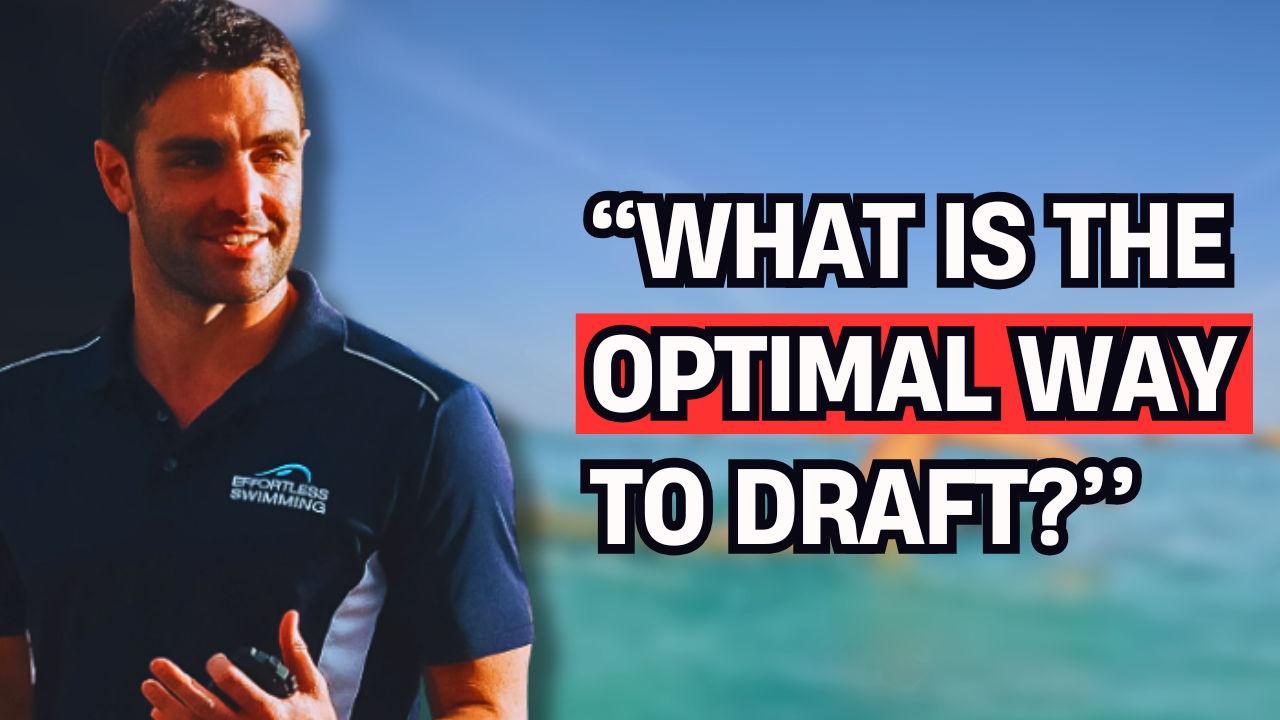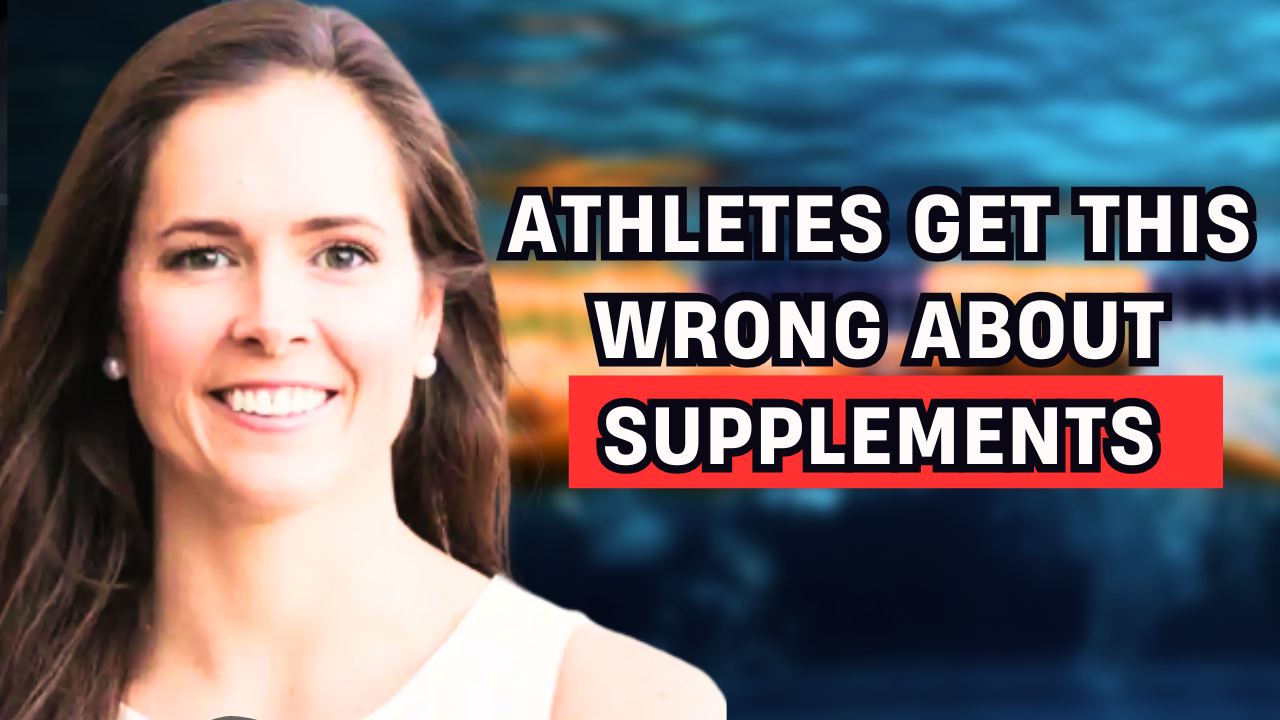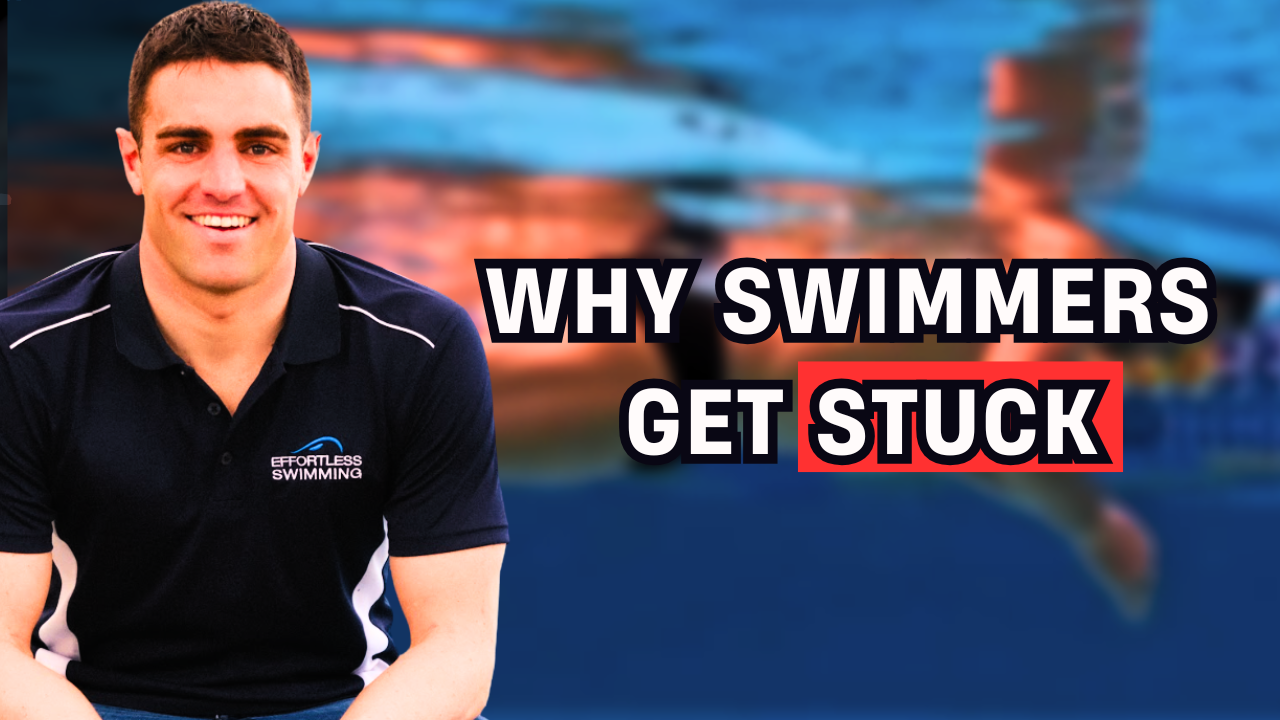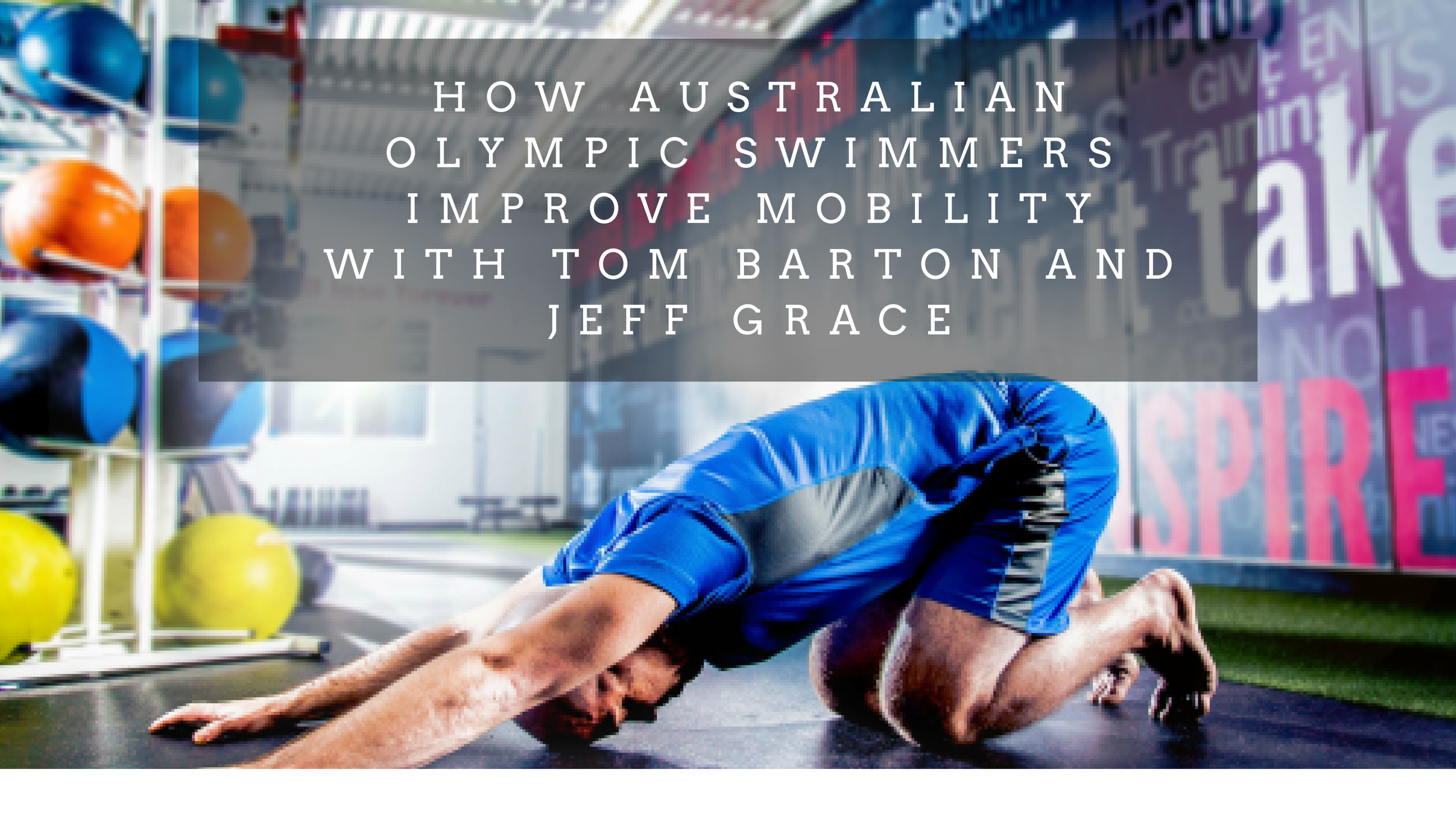We’ve just returned from our annual Hell Week camps in Thailand. Here are nine things I learned from the camp that I thought it would be worth sharing on a podcast.
1. Clear your mind
2. Regular feedback
3. Go crazy
4. Find your ideal stroke rate
5. 3 different ways to think about your ‘Catch’
6. Patience
7. How a 3-minute active warm up can change your entire workout
8. Educate, try and test
9. Getting faster right away isn’t always an indicator of a correct change in your stroke
Next year we have two camps running from October 12-19 and October 20-27. Bookings are now open on our website for Hell Week swim camp. These camps usually book out in a few hours so I recommend reserving your spot as soon as possible.
Click here to book Hell Week 2019
Transcript:
Intro: Welcome to the Effortless swimming podcast. The show that helps swimmers and triathletes love the water, become a better swimmer and live a better life. Here’s your host, Brenton Ford.
Brenton Ford: Hi, Brenton Ford here, welcome to Episode number 125 of The Effortless Swimming Podcast. Today’s episode is called The Nine Things That We Learned On Hell Week Camp. Now, if you don’t know what Hell Week Camp is, it’s a week-long camp that we hold on the island of Phuket in Thailand at a resort called Thanyapura. We’ve been doing this camp for the last five years. It’s where we have around 20 athletes come and join myself and a few other coaches at the resort to work on their technique in their swimming.
Brenton Ford: There’s some challenging sets thrown in there. We do a lot of work on mobility and stretching, mindset and goal setting. It’s not all just about technique, but that’s certainly a heavy focus. We do a lot of underwater filming and analysis throughout the week because that’s why most people come there. You can try and hide anywhere in the world but when it comes to focused and intensive work on your stroke, and learning more about your swimming, this is really the place to be.
Brenton Ford: There’s nine things that I write down, that I took away from the camp that I thought would be worth sharing on this podcast, because it might help you in your own swimming. The first thing that I’ve got here is clearing the mind. One of our coaches, Mitchell Patterson, who was a Commonwealth record holder, he was an Australian representative. He was a coach on the camp. And he’s worked with us for quite a few years now. One of the things that he spoke to the group about was when it comes to racing, when you’re standing behind the block or you’re standing on the start line, you need to have a clear head, and you might want to keep one or two things in mind. But after that, shut yourself off from overthinking and analyzing things. The thinking should be done in training.
Brenton Ford: We talk a lot about this in terms of your technique. Think about your stroke, really concentrate on it when you’re training. But when it comes to racing, the hard work or the thinking is done. So, what you need to do is clear the mind and you may want to use one or two cues or mantras as you’re swimming to remember, but that is it. That allows you to get into flow and get into the state of being able to perform at your best, and all you need to worry about is the pacing and your racing strategy, as opposed to wondering what your left hand is doing on the entry, or in the pool. No, that stuff is done, that’s what you’re doing training. The mind’s got to be clear.
Brenton Ford: Mitch spoke about when he was training, one of the races that he did where he was at the Australian National Championships, in the heats, he went to about a second slower than what he’d done before. The reason he put it down to was because he was overthinking every single part of his stroke. He was wondering about was this entry right, how was his pull through, where was he exiting, how he went off the blocks, his hand position on the blocks, his fate, were his hips high enough. He was thinking about all these little details.
Brenton Ford: Particularly for 100 butterfly, when you’re overthinking things, the timing of the stroke and the timing of each of the movements is going to get thrown off by, might be milliseconds or tenths of a second. If that’s the case, then you’re not going to be able to perform at your very best and get anywhere close to the best time.
Brenton Ford: Now, with that time that he made, he finished ninth in the event, and only eight make the final. But he was fortunate enough that one swimmer in the final pulled out beforehand, which gave him a spot in the final. So, he was in an outside lane. When it came to racing in that final, he didn’t care. It was almost like a free shot. So, when he was standing behind the blocks, he certainly wanted to do well but he wasn’t putting the pressure on himself, and which caused him to not overthink. It caused him to just really clear the mind.
Brenton Ford: He ended up getting second in that race. So, the Australian nationals, from an outside lane, got second, went over a second faster than he did in the heats and ended up with a really good time. He told the story of how he was able to get rid of the overthinking and put that into a stroke.
Brenton Ford: That’s the first thing. Now, the second thing is the importance of regular filming sessions in small groups or individually. Now, one thing that changes here for the Hell Week Camp is the afternoon sessions, nearly, all of them, we’d break into three different groups. There was six or seven in each of those groups. And then we would do three different stations. Now, one of those stations was 30 to 35 minutes of purely filming and analysis and technique work in groups of two or three with a coach.
Brenton Ford: So, the three of us myself, Mitchell Patterson and a professional triathlete and Effortless Swimming coach Mitch[inaudible 00:04:53] We were working with two or three people at a time for 30 to 35 minutes, and we’d be filming them with the iPad. We’d show them that, we’d give them something to work on, film them again. It was just 35 minutes of really just intensive, detailed, stroke work. What each swimming got to do is we went through the week was work with all three different coaches.
Brenton Ford: Now, as you know, different coaches have different ways of explaining things. They look at different things. And so people they’re able to get a feel for what might work here for me? Because not everything is going to work for each person. I found most people came away with one or two key things to practice leaving Hell Week. They got them from the different coaches. So, it really can help to get different opinions and perspectives on things. That’s when you can really have the breakthroughs, which we’ll talk about in a second. But just being able to get some dedicated time, where you actually get to see yourself on the screen, and you’re working purely on your technique, on a fairly regular basis, that’s when we really saw the improvement start to come together.
Brenton Ford: Sometimes it wasn’t until the very last technique session that we saw the change happen because there had been enough time and enough practice put into it that the change was able to happen. So, it’s not going to happen straight away, it does take time. Now, the third one is the need or the … How do you explain it? I guess the willingness to be able to exaggerate some movements to find an improvement in your stroke. One example is a friend of mine who came along in the camp. One of the things that she’s done for a very long time is she’s come up really close to the surface after she’s entered the water. So, her hand comes up quite high, we call it, putting the brakes on.
Brenton Ford: I was working with her in one of these intensive techniques sessions. I kept trying to get her to go deeper with her hand after shed entered because it kept floating up to the surface. It wasn’t until the very end of the session where we said, just go stupid with it. Make it feel so so deep you feel like you’re just swimming really, really stupid. When she did that, she finally got a hand in the right position, which watching her swim allowed her to get a little bit more distance with her stroke because her hand was in a better position. It was creating less drag and it helps set her up for the catch.
Brenton Ford: Now, didn’t feel comfortable about really really stupid. It didn’t feel good to begin with, and she’s going to need to practice this for five or six weeks to have it feel normal and to be able to probably swim faster with it. Because at the moment she doesn’t quite have the rhythm in her strokes to be able to hold it and do it fast. But that was almost a bit of a recurring theme within the camp was, you’ve really got to go a bit crazy or a bit stupid with some of the changes that you may need to make in order to change it. Because if you do it just a little bit, chances are you won’t change anything at all.
Brenton Ford: Now, a bit of a caveat there is, that’s not for everyone at every point in the stroke, but it was certainly something that we saw a lot of. So, you’ve got to be willing to have it feel really uncomfortable. The fourth one is stroke rate. There’s a number of different ways you can find out what stroke rate’s best for you and how you can develop the ideal stroke rate. One thing that we did on the camp was using tempo trainers. We had our swimmers do a ramp test. There’s a number of different ways you can do it. One is, you can do 10 50s with tempo trainer. Tempo trainer is a little device that you can put in your cap and you can set it to beep X amount of times per minute. We had swimmers put this tempo trainer in their cap, go through 10 50s.
Brenton Ford: Some of them would start at 60 strokes per minute, and they’d increase it by three strokes every 50. So, the last 50, they’re doing 87 strokes per minute. We had them record their times and their perceived effort. Out of that, you find the sweet spot. Where the effort is around a seven out of 10, maybe eight out of 10. And the time you’re getting the most bang for your buck.
Brenton Ford: For a lot of swimmers, sometimes this was around a 73 or 74, but everyone’s different depending on their speed. But we were able to find that ideal stroke rate? Then we got them to do a number of hundreds at that stroke rate, trying to maintain it and get the feel for it. Now, with this ramp test, we see it as being your 1500 meter stroke rate. For this test, let’s say someone’s ideal stroke rate was 74 based on that ramp test. That’s roughly what we’d expect them to hold for a 1500 meter swim, provided that they’re fit and they’ve had a bit of practice with it.
Brenton Ford: Using that stroke rate, you can say whether or not you’re going to slow in some of your harder training sessions. It’s just a good thing to look at as opposed to just stroke count or just thinking of your technique. Because your speed is a combination of how far you travel with each stroke. We call that your distance per stroke, and it can be measured by stroke count. And also your stroke rate. So, how fast you’re turning your hands over.
Brenton Ford: Sometimes swimmers will only look at their stroke count, sometimes they only look at their stroke rate? But it’s really a combination of the two, finding that sweet spot for the two of them, that’s going to give you the best results. So, that’s just one thing that we looked at on camp. And that’s something that quite a few swimmers said they’re going to take away and work on and practice. Because they know that there’s opportunity there to swim faster by increasing their stroke rate a little bit from where they currently were.
Brenton Ford: Now, there’s another set that you can do. There’s a seven 200 step test, but you do need a coach to help you with that one. You basically get faster with each of the seven 200. The first one is going to be the slowest and the easiest. The last one is going to be pretty much all out. For that one you can record your stroke count, and you can have a coach record your stroke rate for that as well. You also want to record your time. Now, this is something they will often do it at higher level swimming squads. It’s a really good way to just see what the stroke rate is for the different speeds and the different efforts. If you do it, right, you should see an incremental increase in your speed, in your stroke rate and your stroke count as well.
Brenton Ford: If we say either those drop out, you know, there might be an opportunity there to be able to improve on it. The number five is the catch. I did a talk with the group before we did one of the afternoon sessions. I spoke about three things that I found to be really helpful when it comes to thinking about your catch. The three things were number one, set your paddle then accelerate. So, what that means is one of the things we saw with the number of swimmers was they were trying to go for a lot of power in their pull through or their catch straightaway.
Brenton Ford: Now, when this happens, if you try and pull really hard immediately, you normally always going to slip and it’s very hard to have a high elbow catch position. A better way to think about it is use the catch. Let’s say that’s the first quarter of your pull through under the water. Use that to set yourself in a high elbow catch position. So, set your paddle with your hand and your forearm, close to being vertical in the water then you can accelerate all the way through past the hip. You’re not looking to go for power to start, you’re just looking to use that as the setup. Then you can start to apply power.
Brenton Ford: With a number of swimmers, we’re able to get some really good results with them. There’s one swimmer in the first week, [inaudible 00:12:44] who he was really trying to pull hard, and probably pulling through with more power and effort than you’ll find with a lot of high performance swimmers. But because he was going so hard so early, he was spinning his wheels. His right was too high, and his speed wasn’t showing the amount of effort he was putting in.
Brenton Ford: It wasn’t until we actually got him to slow down, reduce the effort in that first part of the stroke, that he was able to be more effective with his catch and pull through. So, he was able to basically, have a better shape in the water and he was able to time himself better with the catch, the rotation of the body and the acceleration at the back.
Brenton Ford: It’s a good way to think of it, set the pedal, then accelerate. The second thing was protract and retract. This is in terms of your shoulder blades or your scapula. When you enter and you’re extending forwards, the shoulder blade or your scapula will be protracted. Think of it as almost bringing your shoulder forwards a bit. But then once you get your hand underneath your shoulder, after you finish the catch, you’re about to start the pull through, the shoulder blade and the scapula needs to be retracted. Which just means, you think of it as setting the shoulders back.
Brenton Ford: You don’t want to have it protracted in a way where you really puffing the chest out and bringing those shoulders back in a tense position. Think of an upright relaxed position. When the shoulders are there, you can be so much stronger than if the scapula is still protracted, or that shoulder is still forwards. I had them stand up, partner up with someone. We had them go from pushing down. One person would hold their hand up, the other person put their hand on top, and I got them to protract their scapula, bring their shoulder forwards. Push down, see what sort of power they had. Then I got them to retract their scapula and be in an upright, relaxed position, and then push down on their partner.
Brenton Ford: The difference is three to four times more power when you retracted. So, just getting them to think of protracting then retracting once you’re in the power phase, that can help a lot with how strong you can be with your pull through. I had them go through a drill called power diamond drill. Which is basically kicking face down in the water. You have your arms in almost this diamond shape underneath the shoulders. Elbows are out to the side flared. I had them just retract their scapulas a little bit in order to get a feel for that position.
Brenton Ford: They found that quite useful. Now, the third one is the high hip on hand exit. One thing that I look for when I’m coaching and doing underwater filming, is when the hand presses back past the hip, the hip should be high. A lot of swimmers that I’ve worked with in the past have been too flat through the hips, which means that they’re not getting as much length in their stroke. But it can also make it a little bit difficult to get the hand out and into the recovery in a comfortable position.
Brenton Ford: A good thing to think about is having the hip high or lifting the hip up when the hand exits the water. Again, I had them do a drill for this to practice that position. I had them do a single arm freestyle drill with the snorkel on, fins on, and just getting them to work on lifting the hip up as their hand exits at the back there. Now, number six is it takes time and everyone takes different amount of time to have it click.
Brenton Ford: For example, I’ve worked with someone for the last, little bit over three years and he’s come along to a few Hell Weeks, come on to a few clinics, and he’s worked with myself and he’s worked with Mitch Patterson. Worked with him for the last three years it’s really been the last six months or so where things have really started to click, and he’s gone from being a few minutes plus type swimmer in terms of these 1500 meter pace. Around 2:05 to 2:10. To now where he’s really setting himself up to get pretty close to between 1:40 to 1:50 pace. But it’s really only been the last six months that has started to come together.
Brenton Ford: We’ve had swimmers who have made that jump in the first six months of working with us, and then we’ve had swimmers who its taken a bit longer. Everyone’s different and it depends on where they’re starting from. So, one thing that he said made the difference for him was that about six months ago, every single time he went to the pool, he would work on one drill for quite a bit of his session. It was a drill that we use for working on body position. Because one of the biggest things that was slowing him down was his hips and his feet were swimming very low in the water. So, it was a lot of drag. With that much drag, it’s very hard to overcome.
Brenton Ford: It was about two months, I think he said. Two or three months that he worked on this one drill to help bring his bump up, bring his heels up and get him in a better body position. He was able to make a big big change with that. Now, when he’s swimming, you’ll actually see his heels are actually breaking the surface when he’s kicking. Whereas before that sitting about 30 centimeters below the surface. So, he’s made a huge improvement by just keeping it simple and focusing on one thing at a time.
Brenton Ford: Now, along with that and a few other changes with his catch and his mobility, he’s starting to really look like a swimmer. He’s getting so much more length through these strokes, and when he’s doing 100 repeats, he’s sitting at low 1:40. So, a huge change in his stroke, and that’s going to reflect in his times down the track. But everyone’s different.
Brenton Ford: Another example of this is someone who I saw him 18 to 24 months ago. Came to a clinic. I think he’s come to, this week, two clinics, and then he came on to Hell Week. Again, we really saw things click at this Hell Week camp. One of the main things that we did was just making an adjustment with her recovery. All of her stroke, all her timing her entry, her catch was getting thrown off by coming too close the body with her hand, where she was coming over in the recovery.
Brenton Ford: I got her to just make it feel like she was being quite wide with her hand. Opening up through that recovery and it just loosened up her shoulders, allowed her to have the right alignment. Allowed her to enter in the right position. And it also helped her with a catch position. She had made improvements with her stroke since the clinics. But it was just this one thing that was just the bottleneck of everything coming together. It doesn’t happen immediately for people, things take time. It’s just a matter of regularly, well, as often as you can just getting that checkup, and then we’ll find the thing that does work for you.
Brenton Ford: Number seven is an active warm up. One thing that we’ve done at Hell Week the last couple of years is teaching people how to use their bands and massage bowls before their training sessions. Now, one thing that we added this year was a three-minute yoga routine. If you’ve listened to the podcast in the most recent one, you will have heard the guys talking about yoga, and the three-minute yoga routine from [inaudible 00:20:11] swim. I had the swimmers, every single session beforehand, they would go through this three-minute yoga routine.
Brenton Ford: Compared to other years, people have been a lot fresher jumping in the water and starting. Often, the swimmers were quite sluggish as they’re getting in and going through a warm-up. But this year, there was a noticeable difference in how quickly they were able to swim better or to swim well. It didn’t take them 500, 600, 700 meters to get into it. It was almost straight away. Now, I’ll put that down to this three-minute yoga routine that they did before each session.
Brenton Ford: Number eight is educate, try and test. When I ran the first Hell Week Camp, it was really a Hell Week. We did some big big [inaudible 00:21:02] it was hard sessions, we didn’t really do any filming or analysis. It was more of a training week. While it was good fun and the people got a good workout. One of the things that I’ve been told from the people who come that they really come for is to improve their swimming. Because they can do the hard training anytime that they want. They can really kill themselves. I can get that done at squad, they can get it done with friends. But the reason that they want to come to Hell Week is because of all the filming, the analysis and the technique work that we do.
Brenton Ford: So, we did a lot of, I guess, education and filming, trying some things. And then putting that to the test in some challenging sets. It wasn’t all easy swimming. We certainly did some harder sets. Because it can help you really figure things out with your stroke and see what works. An example of this would be in the afternoon sessions, we had the three stations that I mentioned. One of those stations was the filming and the analysis that we did in in small groups.
Brenton Ford: That was the educate and trying new techniques. Then that the testing part was one of the other stations after that was a 30 to 35 minute set. So, one of these sets was … Got to remember it right now, was four 200s build one to four. Four 100s build one to four, and then four 50s building one to four. So, you’re just getting faster with each one that you do there.
Brenton Ford: Going through that set they really got to practice their new technique, and do that under speed. You don’t want to do all this technique work, continue to swim slow. You want to throw in a few challenging efforts there to put it to the test and start to change the habits and build that into your stroke at high speeds there. Now, number nine is everyone is different whether they’ll get faster in the beginning after changing their technique, or whether they’ll go to be slower after changing their technique, and then the improvements will come later.
Brenton Ford: In the beginning of the camp, on day one, we do a 400 [inaudible 00:23:11] trial. We end the camp with a 400 and 200 time trial. We saw in the first week, it was about 50% of the people got faster than day, 15% of the people were slower than day one. We saw similar on the second week, probably it was about 60% of the people got quicker, and 40% were a bit slower than the first week.
Brenton Ford: It comes down to a number of different things. One is how fatigued they are after training, doing two sessions a day for a week. The other one is sometimes the changes that they make in their stroke won’t actually be faster until they’re able to find fluency in rhythm to that new technique and develop the strength to be able to hold it.
Brenton Ford: That’s why I premise it when I run clinics, I let people know that you may get faster right away and that’s certainly common, but you may also get slower. So, you need to be willing to push through that awkward and uncomfortable stage where things aren’t quicker yet so that you can get the payoff in the end.
Brenton Ford: Then there are things that I took away from Hell Week that I thought it’d be worth sharing. Now, the Hell Week Swim Camp we’re running again, next year in Thailand. So, we’ve got two weeks. We’ve got the 12th to the 19th of October and then the 20th to the 27th of October. Almost half of the spots have been filled by people who are returning, and we’re going to open up the camp to those that haven’t been before on the Thursday for those in the US, and it’d be Friday for those in Australia.
Brenton Ford: You can go to effortlessswimming.com and check that out. There’s a link for clinics and camps at the top. Check out the Hell Week Camp. It’ll probably be full by either Friday or Saturday, as there’s only about 20 spots left by the time I’m recording this. So, if this is a camp that you’d be interested in, make sure you go there, check it out and book in straightaway, because there’s not a whole lot of spots left. Otherwise, I hope you got a lot from this podcast and I’ll see on the next episode. Thanks for listening.
Outro: Thanks for listening to the Effortless Swimming Podcast. If you’d like us to help you become a faster, more efficient swimmer, go to effortlessswimming.com.
















